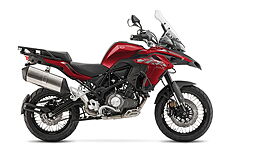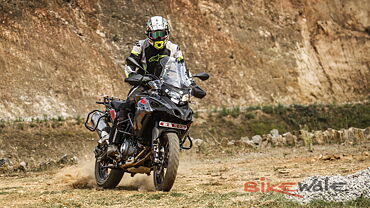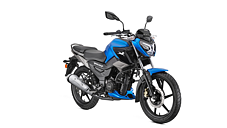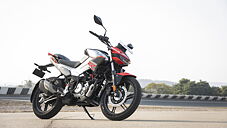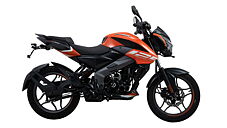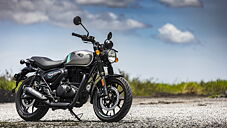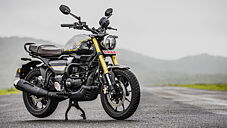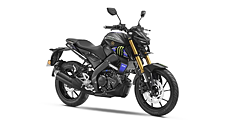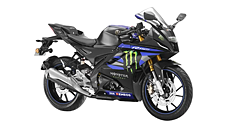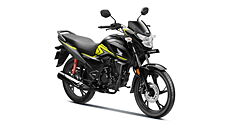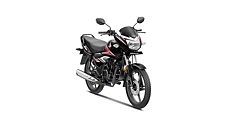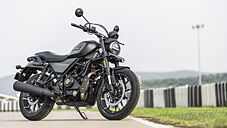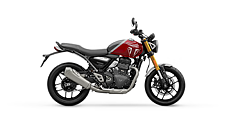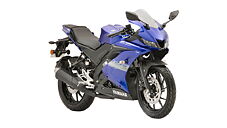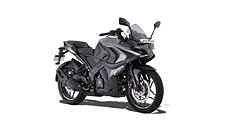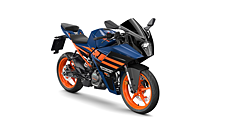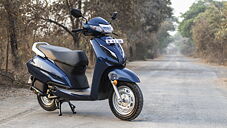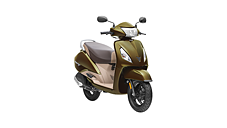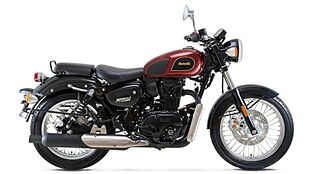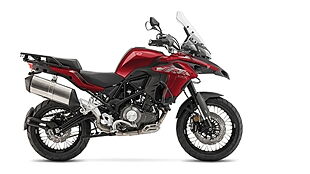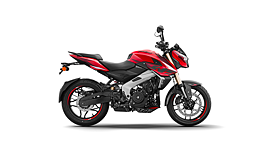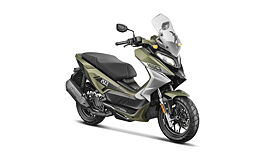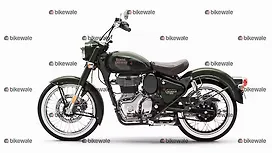Introduction

The Suzuki V-Strom seems to be the flavour of the season at BikeWale. We had compared it with the Kawasaki Versys 650 a little over three months ago. It won that test. And, now here it is again; this time going up against the Benelli TRK 502X.
As it turns out, the V-Strom and the TRK are even more closely related than the Suzuki and the Kawasaki. Both the V-Strom and 502X come with spoked wheels; 19-inch at the front and 17-inch in the rear. Both employ twin-cylinder engines. And besides featuring crash protection and tall screens and knuckle guards, both motorcycles look totally desirable.
Looks and Styling

But, between the two, when it comes to looks, the TRK would be our pick. It might only displace 500cc, but it looks like a full sized ADV. Its street presence is that of a hardened adventurer. And, there’s good attention to detail. The front forks are covered to prevent stone chips; removing the rubber from the footpegs reveals dirt friendly serrated pegs, and there’s a metal bash plate in place too!
The Suzuki, in comparison, looks a little soft. Its tyre treads are less aggressive. Visually there’s more plastic on the bike than metal. And, with its longer and lower stance, and a meeker beak design, it doesn’t seem as Armageddon-ready as the Benelli. But, we do love those gold, tubeless rims. Hashtag ‘want’.
Ergonomics and Quality

The Benelli also gets our vote for sporting better ‘ADV’ ergonomics. These are both sit-up-and-ride motorcycles. But, the TRK is more so. It has the taller set handlebar. The footpegs are more neutrally positioned. And the distance between the handlebar and the seat, and then between the seat and the footpegs feels like a better setup for riding when seated or standing up.
The V-Strom has the wider handlebar though, which clearly helps with leverage. But, its footpegs are more rearset, and the distance between the footpegs and the seat is lesser too. It’s not dramatically different compared to the TRK, but the Suzuki’s seating triangle does feel tighter and less natural compared to the Benelli’s. Even when standing up, the lower set handlebar of the V-Strom does take away somewhat from the standing ergos.

Quality-wise , both the Benelli and the Suzuki, just like the Kawasaki, leave little to be desired. These bikes feel well put together, the plastic are of high quality, the metal finishes look rich, and you won’t find things loose or falling off or malfunctioning, even after trashing the bikes.
Features and Technology

So far the Benelli has been ahead, courtesy its better ergos and a more eyeball grabbing design. And, it is the cheaper of the two motorcycles here as well. However, the Suzuki does offer additional goodies for the extra price. The TRK 502X comes with liquid cooling and fuel injection, and dual channel ABS. It also gets a gear indicator and LED tail lamps and indicators. And it has upside down front forks.

The V-Strom runs conventional front forks. And, like the TRK’s, these are of the non-adjustable variety. This apart, the Suzuki sports everything else that the TRK comes with. And some. It gets tubeless spoked wheels. It gets switchable traction control and ABS. And, it has more feature rich instrumentation. Besides gear indication, it also throws up information on average and instantaneous fuel economy, and range.
Engine and Performance

The V-Strom displaces 645cc, makes 71bhp, and has a handsome 64Nm of peak torque. The 502X in comparison is down 150cc, and as a result, the output figures for the TRK are lower as well. The Benelli makes about 46bhp and 45Nm.
Add to it the higher kerb weight of the TRK (it weighs around 20kg more), and it’s not surprising that the 502X feels slower and less exciting. But, it’s also more exploitable, mind. You can wring the throttle to the stops on the TRK as recklessly as you want, and it won’t scare you. What's more, unless you are on loose surfaces, it won’t slide from under you either.

One has to be more careful with the V-Strom, of course. Not only is it more powerful, torquier and lighter, it also has a significantly more potent low and mid range. The TRK tries to compensate for its lack of low end by employing a shorter final drive, but it’s still no match for the Suzuki. On the V-Strom you need to use the right wrist more judiciously. Having said that, if you are an experienced rider, it’s also easy to be playful with the 650.
When it comes to engine characteristics, neither engine is really smooth. Both feel fine till about 5,000-5,500rpm, after which vibrations can be felt particularly on the seat on both bikes. As far as power delivery and throttle response goes, again, it’s linear, well calibrated, and predictable on both motorcycles. But, of course, the Suzuki packs in a meaner punch.
Ride and Handling

Now, both these bikes might be ADVs with off-road focus dripping through their spoked wheels and the tall stance. But, these can be used on the road without bother. In the city, the Suzuki feels slightly better on account of a lighter, more progressive clutch, and a lower seat height. But, the TRK isn’t bad either. It is heavy, but its balance point is easy to find. And then on, it’s not too difficult to pilot or even park.
The Suzuki is also the better handling motorcycle. Sure, it’s not exactly effortless or intuitive when it comes to changing directions in a hurry. But, after the TRK, which feels a little vague, a little lazy, and more work around the really quick sections, the V-Strom comes across as lighter, sportier and more fun.
The TRK does have a plusher ride quality, nonetheless. So, on sections where the V-Strom’s front end would judder and shake and send unruly vibrations up the rider’s hands, the 502X keeps its calm, and just carries on. And that makes it nicer to ride on dirt as well.

Whether you choose to jump it over a crest, or hop over logs, or just keep it pinned over a section of broken rocks, the TRK’s suspension never protests. It just always feels up to the bidding. Moreover, its better stand-up-and-ride ergos and more balanced weight distribution only help its cause on the rough stuff.
The Suzuki is more playful on dirt thanks to its higher output figures. You can slide it at will in first or second; you can negotiate climbs and rock minefields with ease; and if you aren’t mechanically too sympathetic, you can jump it over crests with abandon as well. And, I mention mechanical sympathy here because the V-Strom’s soft suspension means that it tends to bottom out quite soon, and quite often.
Fuel Efficiency and Price

As we mentioned before, the V-Strom is the more expensive of the two. It costs Rs 8.63 lakhs on the road in Mumbai. And for this, you get some additional features that are missing on the TRK. The 502X, in the meantime, costs Rs 6.91 lakhs, again, on the road in Mumbai, which makes it significantly cheaper to buy.

However, when it comes to fuel economy, the stronger lower end torque, the taller overall gearing, and the lighter weight of the V-Strom help it return better fuel efficiency figures, both in the city and on the highway. The Suzuki returned 23.7kmpl in our tests against 21.1kmpl returned by the TRK.
Verdict

The Suzuki V-Strom wins this test. Yes, it is more expensive; it doesn’t have as plush a ride; and, it certainly doesn’t look as battle-ready as the TRK. But, in every other area, the Suzuki outperforms the Benelli. It is quicker, it has better dynamics, it is more efficient, more tech laden, and the list goes on… And, in our book, all this makes the bike worth the extra money.
As for the TRK, we think it is lovely off road. And you can live with it in the city or go touring on it, and it checks most of the ADV boxes. It’s just that it doesn’t feel special or exciting or fast. If you can’t afford the Suzuki, go for TRK. But, if you can, don’t save that extra dough.
Final Scores
| Parameters | Max Points | Suzuki V-Strom 650 XT | Benelli TRK 502X |
| Looks & styling | 10 | 7.5 | 8 |
| Ergonomics & Quality | 10 | 8.5 | 8.5 |
| Features & Tech | 10 | 7.5 | 6 |
| Engine & Gearbox | 10 | 8 | 7 |
| Performance | 10 | 8.5 | 7 |
| Ride Quality | 10 | 6.5 | 7 |
| Handling & Braking | 10 | 7 | 6 |
| Fuel Efficiency | 10 | 5 | 4 |
| Price & Warranty | 10 | 4 | 5 |
| Desirablility | 10 | 7.5 | 6.5 |
| Total | 100 | 70 | 65 |
Specifications
| Make | Suzuki | Benelli |
| Model | V-Strom 650 XT | TRK 502X |
| POWER TRAIN | ||
| Engine Type |
Liquid-Cooled |
Liquid-cooled |
| Capacity | 645cc | 500cc |
| Max Power | 71bhp | 47bhp |
| Max Torque | 62Nm | 46Nm |
| Gearbox | 6-speed | 6-speed |
| Fuel Efficiency | 23.7kmpl | 22kmpl |
| CYCLE PARTS | ||
| Supension F | Telescopic | Inverted Telescopic |
| Suspension R | Monoshcok | Monoshock |
| Brakes F | 310mm dual discs with ABS | 320mm dual discs with ABS |
| Brakes R | 260mm disc | 260mm disc |
| Tyre F | 110/80-19 (Tubeless) | 110/80-19 (Tubeless) |
| Tyre R | 150/70-17 (Tubeless) | 150/70-17 (Tubless) |
| MEASURES | ||
| Fuel Tank | 20 litres | 20 litres |
| Wheelbase | 1560mm | 1505mm |
| L x W x H | 2275mm x 910mm x 1405mm | 2200mm x 915mm x 1480mm |
| Kerb Weight | 216 kg | 235 kg |
Gallery
1/80
Benelli TRK 502X vs Suzuki V-Strom 650 XT
Double Tap to Zoom











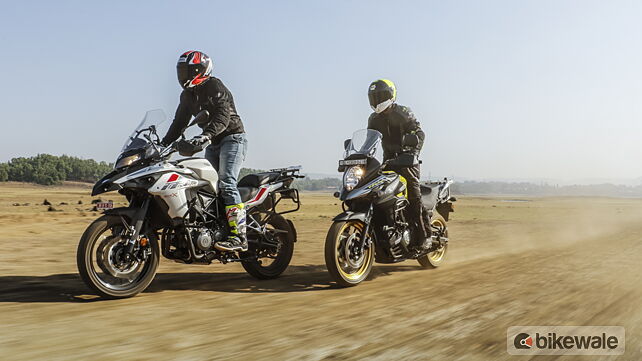







![[object Object] ThumbNail Images [object Object] ThumbNail Images](https://imgd.aeplcdn.com/642x361/bw/ec/39192/Benelli-TRK-502X-Action-153291.jpg?wm=2&q=80)
![[object Object] ThumbNail Images [object Object] ThumbNail Images](https://imgd.aeplcdn.com/642x361/bw/ec/39192/Benelli-TRK-502X-Action-153292.jpg?wm=2&q=80)
![[object Object] ThumbNail Images [object Object] ThumbNail Images](https://imgd.aeplcdn.com/642x361/bw/ec/39192/Benelli-TRK-502X-Action-153293.jpg?wm=2&q=80)
![[object Object] ThumbNail Images [object Object] ThumbNail Images](https://imgd.aeplcdn.com/642x361/bw/ec/39192/Benelli-TRK-502X-Action-153294.jpg?wm=2&q=80)
![[object Object] ThumbNail Images [object Object] ThumbNail Images](https://imgd.aeplcdn.com/642x361/bw/ec/39192/Benelli-TRK-502X-Action-153295.jpg?wm=2&q=80)
